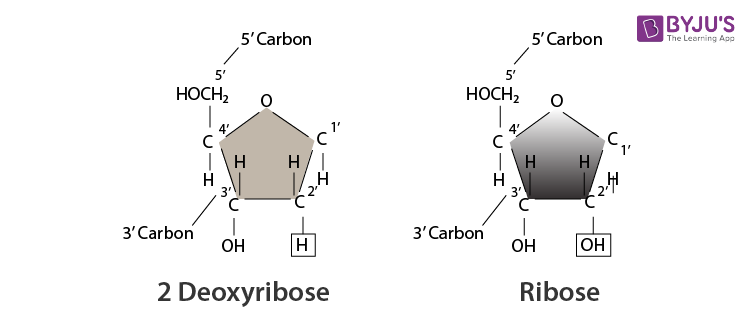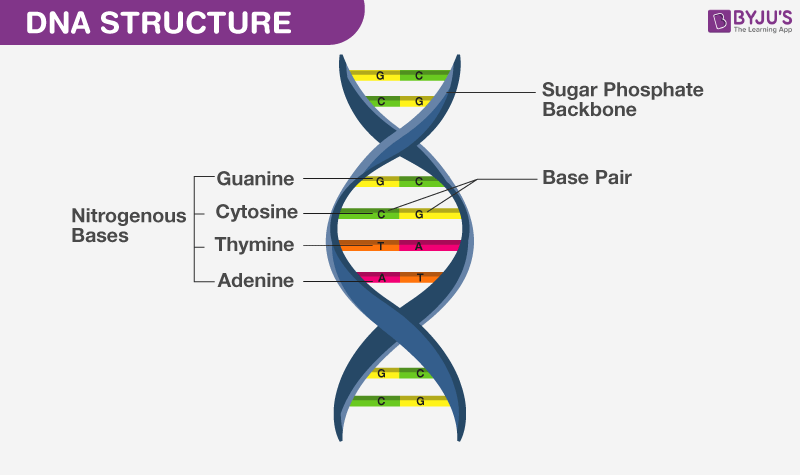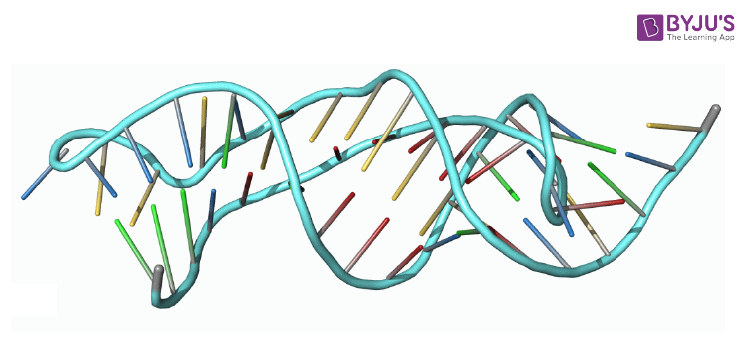Nucleic acids are long-chain polymeric molecules. The monomer or the repeating unit is known as the nucleotides and hence sometimes nucleic acids are referred to as polynucleotides. Nucleic acids can be defined as organic molecules present in living cells. It plays a key factor in transferring genetic information from one generation to the next. Nucleic acids are composed of DNA-deoxyribonucleic acid and RNA-ribonucleic acid that form the polymers of nucleotides.

In the nucleus, nucleotide monomers are linked together comprising of distinct components namely a Phosphate Group, Nitrogenous Bases or Ribose and Deoxyribose. Pyrimidines and Purines are two types of nitrogenous bases. Pyrimidines are composed of cytosine and thymine. Purines are composed of guanine and adenine. Thymine is replaced by Uracil in ribonucleic acid whereas deoxyribonucleic acid comprises of all four bases.
Table of Contents
DNA Structure
DNA consists of instructions that monitor the performance of all cell functions. It is a cellular molecule that is organized into chromosomes. They are present in the nucleus of the cells and contain cellular activities.

It is a double helix formed by 2 polynucleotide chains that are twisted. There are 2 strands of DNA which are parallel to each other. Hydrogen bond binds two helices and the bases are bundled within the helix. Due to the presence of phosphate groups, DNA is negatively charged.
Chemically, DNA is composed of a pentose sugar, phosphoric acid and some cyclic bases containing nitrogen. The sugar moiety present in DNA molecules is β-D-2-deoxyribose. The cyclic bases that have nitrogen in them are adenine (A), guanine (G), cytosine(C) and thymine (T). These bases and their arrangement in the molecules of DNA play an important role in the storage of information from one generation to the next one.
RNA Structure
RNA plays a vital role in the synthesis of proteins that mainly involves decoding and translation of genetic code and transcription to produce proteins.
RNA molecules are also composed of phosphoric acid, a pentose sugar and some cyclic bases containing nitrogen. RNA has β-D-ribose in it as the sugar moiety. The heterocyclic bases present in RNA are adenine (A), guanine (G), cytosine(C) and uracil (U). In RNA the fourth base is different from that of DNA. The RNA generally consists of a single strand which sometimes folds back.

There are several different types of RNA and each has a specific function.
-
-
-
- Ribosomal RNA – It is one of the components of ribosomes that are involved in protein synthesis.
- Transfer RNA – It is essential for the translation of mRNA in protein synthesis.
- Micro RNAs – It is the smallest among all RNA that helps in regulating gene expressions.
- Messenger RNA – It is the RNA transcript that is produced during DNA transcription.
-
-
Functions of Nucleic Acids
-
-
-
- Nucleic Acid is responsible for the synthesis of protein in our body
- RNA is a vital component of protein synthesis.
- Loss of DNA content is linked to many diseases.
- DNA is an essential component required for transferring genes from parents to offspring.
- All the information of a cell is stored in DNA.
- DNA fingerprinting is a method used by forensic experts to determine paternity. It is also used for the identification of criminals. It has also played a major role in studies regarding biological evolution and genetics.
-
-
Recommended Videos
Biomolecules


Comments